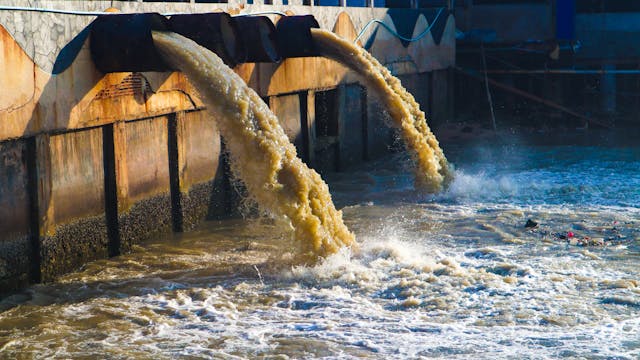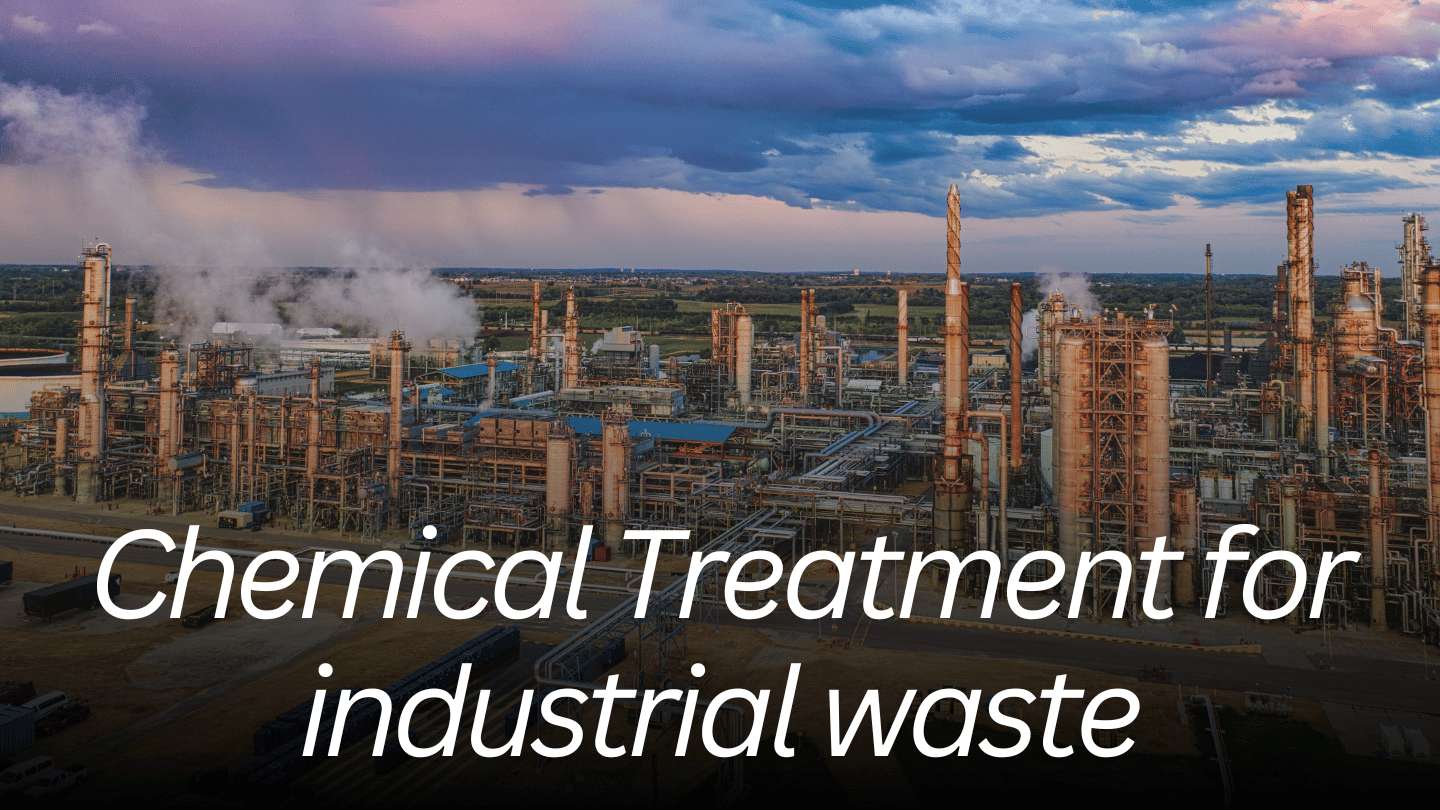Industrial Waste Water Treatment-- Comprehensive Equipments for Wastewater Disposal
Industrial Waste Water Treatment-- Comprehensive Equipments for Wastewater Disposal
Blog Article
Challenges and Solutions in Hazardous Waste Water Therapy
The therapy of commercial wastewater provides a diverse array of challenges, varying from rigid regulative compliance to the intricacies of price monitoring and technological limitations. The irregularity in waste make-up additionally complicates the performance of standard treatment methods, often resulting in risen operational expenses.
Regulatory Conformity Challenges
How can commercial facilities browse the complicated landscape of regulatory conformity in wastewater treatment? The governing framework governing wastewater monitoring is multifaceted, often differing by jurisdiction and sort of industry. Facilities should stick to federal, state, and local laws that dictate effluent top quality requirements, discharge limits, and tracking requirements. Failure to abide can lead to extreme charges, consisting of fines and functional closures.
To successfully take care of these compliance difficulties, centers ought to apply robust tracking and reporting systems that make certain real-time data collection and analysis. Routine audits and threat assessments can determine prospective conformity gaps, enabling for positive changes in therapy processes. Employee training programs concentrating on governing expertise and best practices are vital to cultivate a society of conformity within the company.
In addition, engaging with regulative agencies can supply beneficial insights and make clear ambiguous guidelines. Facilities may likewise profit from seeking advice from ecological specialists who concentrate on wastewater treatment compliance, making certain that they stay abreast of advancing regulations. By embracing these approaches, industrial facilities can not just fulfill compliance demands yet additionally enhance their operational performance and ecological stewardship.
Cost and Economic Barriers
Browsing governing compliance in wastewater treatment typically offers substantial financial challenges for industrial centers. The prices related to implementing required therapy innovations, keeping conformity with rigorous regulations, and handling functional expenditures can be daunting. Lots of companies deal with high first capital investment for the construction or upgrading of wastewater treatment plants, which may strain budget plans, particularly for medium-sized and little business.
Moreover, continuous functional expenses, including chemical, labor, and upkeep inputs, add to the monetary concern. The unpredictability of varying energy prices and the possible demand for extra investments to satisfy developing regulations exacerbate these financial stress. In lots of situations, the lack of economic motivations or support from government bodies makes it a lot more difficult for companies to justify financial investments in sophisticated treatment systems.
Additionally, the financial feasibility of wastewater treatment remedies is commonly questioned, particularly for sectors with limited profit margins. It is crucial for commercial facilities to discover affordable approaches, such as embracing cutting-edge financing choices, involving in partnerships, and leveraging arising technologies that can assist minimize these economic obstacles while ensuring compliance with ecological standards.

Technological Limitations
Various technological constraints prevent the efficiency of industrial wastewater therapy procedures. One considerable challenge is the insufficiency of existing therapy technologies to address intricate pollutants. Numerous traditional methods, such as activated sludge and chemical rainfall, deal with the removal of arising contaminants, including microplastics and pharmaceuticals. This constraint usually leads to the discharge of inadequately dealt with water, which can have harmful ecological effects.
Furthermore, the scalability of therapy innovations postures a challenge. While some innovative methods, like membrane layer filtration or sophisticated oxidation, reveal promise in regulated settings, their implementation on a bigger range can be practically tough and prohibitively costly. Upkeep and functional complexities even more make complex the fostering of these systems, especially for smaller markets with minimal technical know-how.
The integration of real-time monitoring innovations likewise stays inadequate in several therapy facilities. Without effective tracking systems, drivers can not adequately evaluate treatment effectiveness or find possible failings, leading to inconsistent effluent quality. Consequently, attending to these technical restrictions with study and growth, along with financial investment in cutting-edge remedies, is critical for boosting the efficiency of commercial wastewater therapy and making certain governing conformity. Industrial Waste Water Treatment.
Variability in Waste Composition
In the world of commercial wastewater treatment, the variability in waste make-up provides a powerful challenge. Industries create wastewater with varied qualities, influenced by variables such as manufacturing processes, resources, and functional methods. This heterogeneity makes complex the treatment process, as conventional systems frequently battle to successfully attend to the variety of contaminants present.
As an example, wastewater from food processing might consist of high levels of raw material, while effluents from chemical production might include hefty metals and unsafe compounds. This variance requires versatile treatment approaches to make certain compliance with ecological regulations and shield public health. In addition, fluctuations in waste make-up can occur gradually, influenced by modifications in manufacturing schedules, upkeep tasks, or the introduction of brand-new items.

Cutting-edge Treatment Solutions
Cutting-edge treatment remedies are important for resolving the complexities of commercial wastewater monitoring. Conventional approaches frequently drop brief in efficiently getting rid of a wide variety of impurities, particularly in centers with varied effluent streams. Current developments concentrate on incorporating cutting-edge innovations to boost therapy efficiency and sustainability.
One appealing technique is the usage of advanced oxidation processes (AOPs), which take advantage of effective oxidants to weaken organic contaminants. AOPs, including photocatalysis and ozonation, can dramatically reduce harmful substances and boost effluent top quality. In addition, membrane layer bioreactor (MBR) innovation has gained traction, incorporating organic view treatment with membrane filtering, causing premium effluent and decreased footprint.
An additional ingenious option is the application of resource recovery systems. Strategies like anaerobic digestion not only deal with wastewater however likewise create biogas, which can be taken advantage of as an eco-friendly power source. The adoption of synthetic intelligence and machine understanding designs can enhance treatment procedures by forecasting variations in wastewater composition, therefore boosting operational efficiency.
These cutting-edge options not only address governing conformity but likewise promote ecological sustainability, leading the way for an extra durable and efficient industrial ecological community.
Final Thought
In verdict, addressing the difficulties of commercial wastewater therapy calls for a multifaceted technique that incorporates regulative conformity, price monitoring, and technical innovations. A commitment to constant renovation in treatment approaches will ultimately contribute to the effective basics monitoring of industrial wastewater and ecological security.
The treatment of commercial wastewater provides a complex selection of obstacles, varying from rigorous governing conformity to the intricacies of price monitoring and technical constraints. Industrial Waste Water Treatment.Browsing governing conformity in wastewater click for more info treatment typically provides considerable financial challenges for commercial centers. Resolving these technical restrictions through research and growth, along with financial investment in ingenious services, is essential for enhancing the efficiency of commercial wastewater treatment and ensuring governing conformity
Wastewater treatment centers need to invest in robust surveillance systems and adaptable therapy innovations capable of suiting varying influent characteristics.In verdict, attending to the challenges of commercial wastewater treatment requires a diverse method that incorporates regulative compliance, expense management, and technical innovations.
Report this page